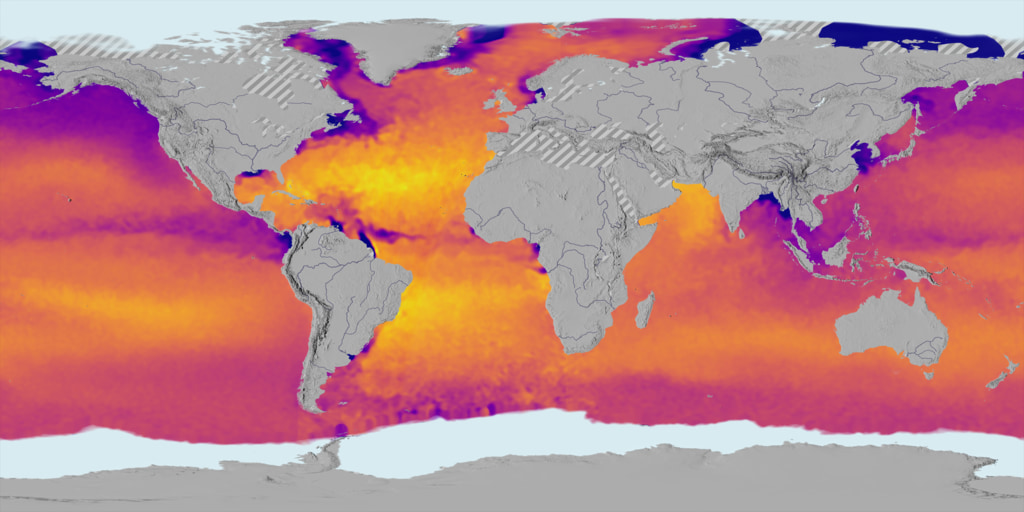Aquarius Sea Surface Salinity 2011-2015
Rectangular flat map projection shows Sea Surface Salinity measurements taken by Aquarius in its whole life span (September 2011 - May 2015).
Aquarius is a collaboration between NASA and the Space Agency of Argentina to measure global sea surface salinity (the amount of dissolved salts in water). Measuring salinity can help us better understand the water cycle and can also lead to improved climate models.
The visualizations show the complete observations of sea surface salinity taken during the life span (2011 through May 2015) of the Aquarius spacecraft. In these visualizations, sea surface salinity is shown ranging from 30 to 40 PSU (from blue to green to red) on a flat map using simple cartesian and extended Molleide projections. The visualizations were generated based on version 4.0 of the Aquarius data products. Salinity plays a major role in how ocean waters circulate around the globe. Salinity changes can create ocean circulation changes that, in turn, may impact regional and global climates.
The same data set of sea surface salinity in Mollweide map projection.

Aquarius color bar showing salinity range from 30 to 40 PSU, going from blue to green to red.
Credits
Please give credit for this item to:
NASA's Scientific Visualization Studio
-
Animators
- Cheng Zhang (USRA)
- Horace Mitchell (NASA/GSFC)
- Kel Elkins (USRA)
- Greg Shirah (NASA/GSFC)
-
Scientist
- Gene Feldman (NASA/GSFC)
Release date
This page was originally published on Thursday, September 10, 2015.
This page was last updated on Monday, July 15, 2024 at 12:04 AM EDT.
Datasets used in this visualization
-
SSS (Sea Surface Salinity) [Aquarius: Microwave Radiometer]
ID: 774
Note: While we identify the data sets used in these visualizations, we do not store any further details, nor the data sets themselves on our site.
